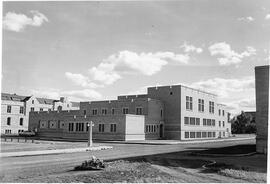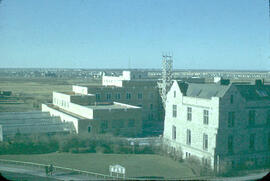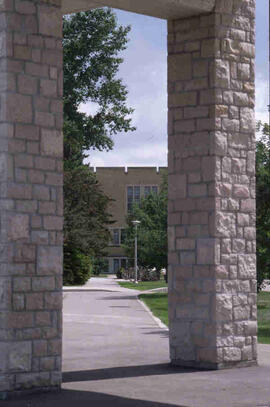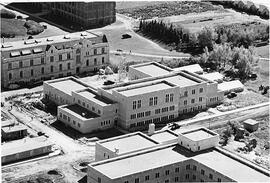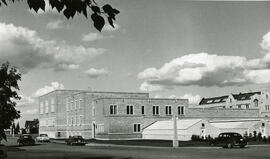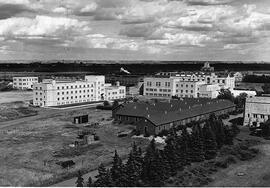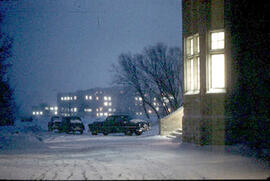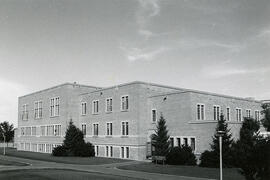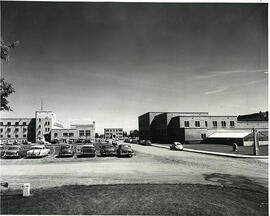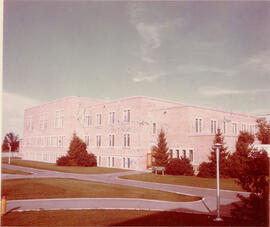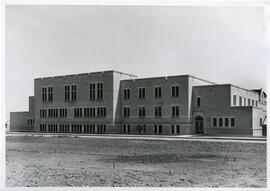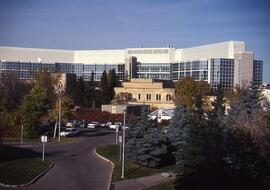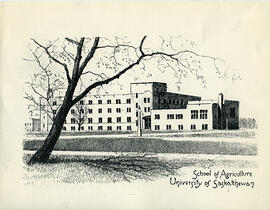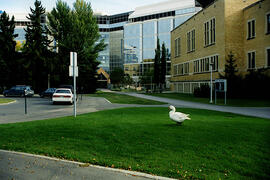John Mitchell Building - Exterior
- A-469
- Pièce
- Sept. 1957
Fait partie de University of Saskatchewan Photograph Collection
View looking southeast of the John Mitchell (formerly Soils and Dairy Science) Building. Crop Science (formerly Field Husbandry) Building in background; corner of Kirk Hall in foreground.
Bio/Historical Note: John Mitchell was born in 1897 at Bradwardine, Manitoba, and moved to Saskatchewan as a youngster. His family farmed near Marsden. He enrolled in the College of Agriculture in 1915, interrupting his studies to serve in the Canadian Expeditionary Forces from 1916-1918. He saw action in France as an officer in the artillery division and, wounded in 1917, he returned home. Mitchell completed his BSA in 1924 at the University of Saskatchewan and joined the Saskatchewan Soil Survey that same year. While a student, he had worked summers with the Soldiers' Settlement Board, assisting returning veterans to become farmers. In 1925 Mitchell became an instructor in the College of Agriculture and continued his work mapping soils and measuring their chemical and physical properties. He did graduate work at the University of Wisconsin, then one of the leading universities in soil science, completing an MSc in 1929 and a PhD in 1931 before returning to the U of S. He was appointed professor and Head of the Department of Soils in 1935, positions that he held for the rest of his career. Mitchell was regarded internationally as a distinguished scientist. He was the first president of the Saskatchewan Agricultural Graduates Association, and figures in the Saskatchewan Agricultural Hall of Fame. The John Mitchell Building, once the Soils and Dairy Building and presently the home of the Department of Drama, recognizes his contribution to the University of Saskatchewan. John Mitchell died in 1955.

